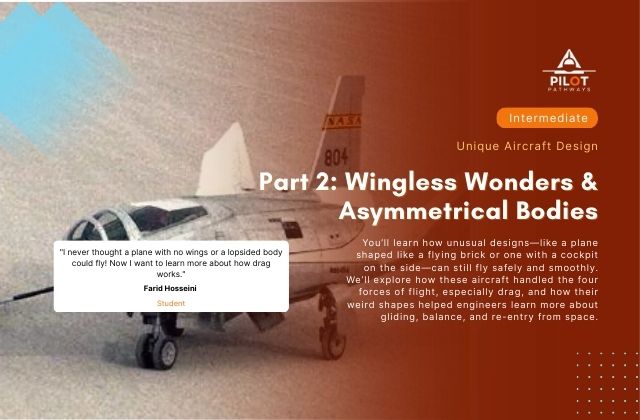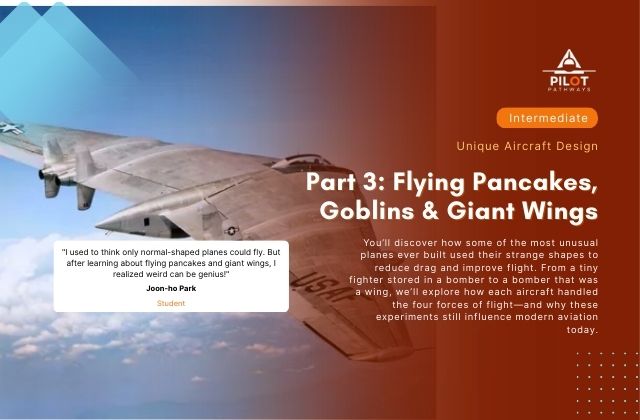.jpg)
Part 6: The Story of Wing-in-Ground Affect Craft
Instructor
What Will You Learn?
About This Course
Ever seen a bird glide low over water like it’s flying on air?
This course takes you into the world of Wing-in-Ground effect craft — or WIGs — super cool machines that aren’t quite planes and aren’t quite boats. From Russia’s massive “Caspian Sea Monster” to modern coastal gliders, WIG craft use a secret science called ground effect to float just meters above water at high speeds. You’ll learn how these sci-fi-like vehicles work, their parts, why they’re used, and the physics that make them fly close to the surface. It’s all about speed, science, and smart design!
As you dive into this fascinating subject, you'll discover how engineers have pushed the boundaries of conventional flight and marine design. Get ready for a journey that combines innovation with adventure, exploring the potential of WIG technology for the future of transportation.
Curriculum Overview
This course includes 3 modules, 6 lessons, and 2:00 hours of materials.
In this course, you’ll discover the amazing world of wing-in-ground effect craft — vehicles that fly super low over water using something called ground effect.
Before you begin the quiz, please write your full name before start the quiz. This helps us know who you are and keep track of your progress.
Green Skies Project — Your Vision for Sustainable Flight
Imagine you are part of a global team of young innovators designing a new eco-friendly aircraft. In this project, you will apply what you’ve learned about green aviation — such as clean fuels, lightweight materials, aerodynamic design, and future technologies — to create your own green aircraft concept that helps reduce the impact of air travel on our planet.
📌 Assignment Instructions:
You will submit a Green Aircraft Design Proposal that includes the following parts:
1. ✈️ Your Aircraft Concept
Give your aircraft a creative name, and write a short description (50–100 words) of what it is, who it’s for (passenger, cargo, emergency, etc.), and where it will fly (short or long range).
2. 🖊️ Green Design Report (300–400 words)
Answer the following in paragraph or bullet form:
- What green technology or feature does your aircraft use? (e.g. electric engines, hydrogen fuel, solar panels, blended wings, recycled materials, etc.)
- How does it help reduce pollution or fuel use?
- What materials are used in your aircraft to make it lightweight and sustainable?
- How is it different from regular aircraft today?
3. 📐 Aircraft Sketch or Digital Drawing
- Create a simple hand-drawn or digital design of your aircraft showing its unique eco-friendly features. Label the parts and highlight green technologies (like wing shape, engines, solar panels, etc.).
4. 🌍 Environmental Impact Summary (100–150 words)
Explain how your aircraft design will make a positive difference for the planet. Consider:
- Emission reduction
- Fuel/energy savings
- Noise pollution
- Recyclability
Course Certificate
.jpg)
Course Specifications
.jpg)
.png)
.png)






.jpg)


.png)





.jpg)
Reply to Comment